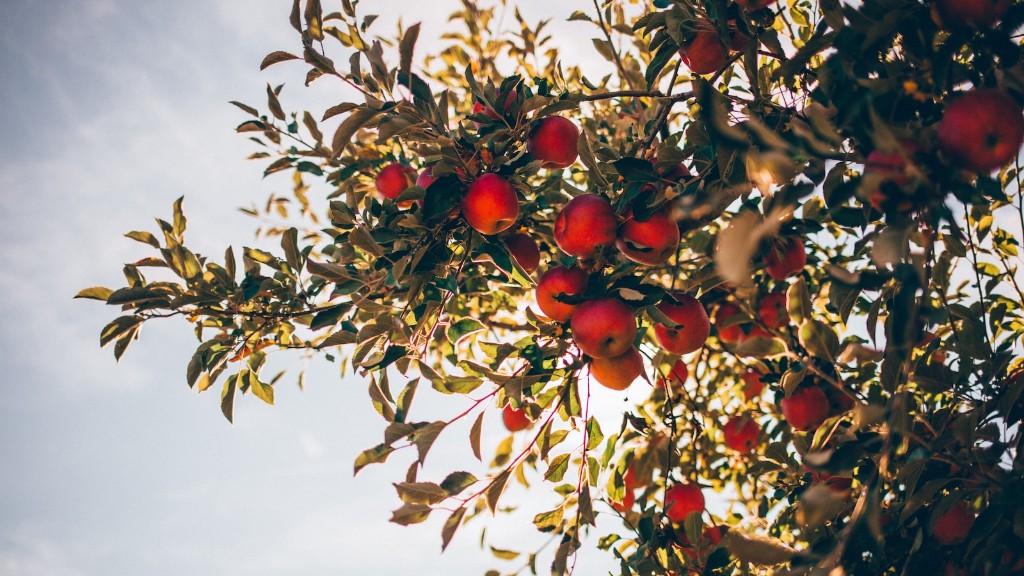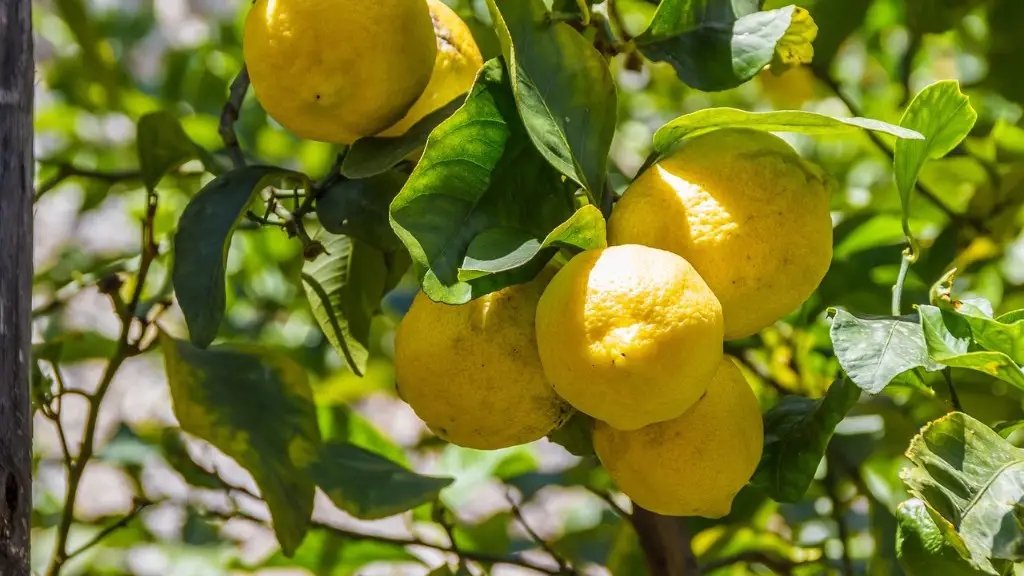Gathering the Necessary Supplies
Planting a cherry tree is an easy, rewarding process which anyone can do as long as they have the necessary supplies and follow the appropriate instructions. To plant a cherry tree, you will need a cherry tree, soil, compost, mulch, fertilizer, water, gardening tools (such as a spade, hoe and rake), and gardening gloves. You may also need protective equipment such as a hat to protect yourself from the sun.
Choose the Right Spot
Choosing the right spot is essential for the success of your cherry tree. Your chosen spot should be sunny and sheltered, and it should also provide easy access to water so that you can properly care for your tree in the future. When selecting your spot, remember to take into account the growth pattern of the tree and the ultimate expected height of the tree once fully grown.
Planting the Tree
Once you have chosen the right spot for your cherry tree, it is time to begin planting it. Start by digging a hole which is approximately twice the size of the tree’s rootball. Take the tree from the pot it arrived in and place it into the hole. Fill the remaining space around the tree with a mix of soil, compost and mulch. Gently firm the soil around the tree and water it thoroughly.
Fertilising the Soil
Fertilising the soil is important to ensure that the cherry tree grows and develops properly. Choose a fertilizer which is appropriate for the type of cherry tree you are planting. Once you have chosen the right fertilizer, spread it evenly around the base of the tree, making sure that it reaches the roots.
Caring for the Tree
In order for your cherry tree to thrive and produce lush cherries, it needs to be properly cared for. Watering the tree is essential, and should be done every other day during its first year of growth. When the temperature begins to fall in late autumn, it is a good idea to add a thick layer of mulch around the base of the tree to protect its roots from the cold.
Pruning the Tree
Pruning is an essential part of cherry tree care, and should be done at least once a year. Pruning keeps the tree healthy and encourages it to produce more cherries. To prune a cherry tree, start by removing any dead, damaged or diseased branches. Trim back the branches by approximately a third and thin out any overcrowded areas.
Protect Against Pest and Disease
Cherry trees are vulnerable to pests and diseases, so it is important to take steps to protect your tree from these potential threats. Check your tree regularly for signs of pests and disease, and treat any infestations immediately with an appropriate pest or disease control product. Keeping the tree well nourished and healthy can also help to prevent pests and diseases.
Harvesting the Fruit
When harvesting cherries, it is important to wait until they are fully ripe. You can tell when they are ripe when they are dark red and firm to the touch. When picking the cherries, be gentle as they are susceptible to damage. Once you have harvested the cherries, store them in a cool, dry place.
Soil pH and Nutrient Levels
The success of a cherry tree largely depends on the soil pH and nutrient levels. If the soil is too acidic, the tree may suffer from nutrient deficiencies which can lead to stunted growth. It is a good idea to test the soil pH and nutrient levels before planting your cherry tree. This will tell you whether the soil needs any amendments, such as adding lime to balance the pH or fertilisers to boost the nutrient content.
Planting Cherry Tree in Containers
For those who may not have access to a garden, planting cherry trees in containers is a great alternative. Choose a container which is large enough to accommodate the rootball of the cherry tree. Plant the tree in a mix of equal parts garden soil, compost and peat moss. To promote good drainage, add some gravel or perlite to the bottom of the container before planting.
Protecting Cherry Tree from Frost Damage
Cherry trees are susceptible to frost damage, so it is important to protect them during cold winter months. Wrap the tree in a frost cloth to protect it from severe cold. If the temperature is expected to be very low (below minus 15 degrees Celsius), mulch around the tree’s roots to insulate them from the cold.
Properly Training the Tree
Properly training a cherry tree is essential to encourage it to produce a large crop of nutritious and delicious cherries. To train the tree, use pruning and training methods such as spacing and thinning branches, tipping and pinching shoots, and removing competing branches. Training can be done at any time of the year, but the best time to do so is during the winter months when the tree is dormant.
Pest Management Strategies
When it comes to protecting your cherry tree from pests, it is important to use a variety of strategies. Start with integrated pest management, which uses natural predators and chemical sprays to control pests and diseases. Some of the most common pests that can affect cherry trees include aphids, caterpillars, scale insects and powdery mildew.
Incorporating Companion Plants
Using companion plants can help to protect your cherry tree from pests and improve the overall health of the tree. Plants such as garlic, basil, mint, rosemary and thyme can help to repel pests, while legumes such as clover can add nitrogen to the soil. Incorporating companion plants into your garden can help to strengthen the tree’s overall immunity to disease.
Staking the Tree
Staking your cherry tree may be necessary if it is in an exposed position or if it is young and needs extra support. Choose a strong, durable stake and make sure that it is firmly in place before winding the ties around the tree. Be sure to leave a gap between the tree and the stake to allow for movement in the wind.



